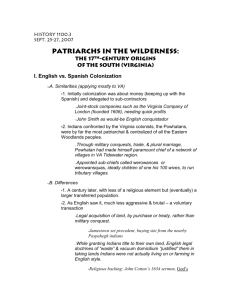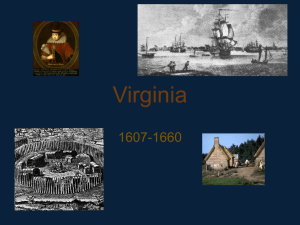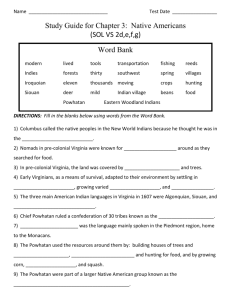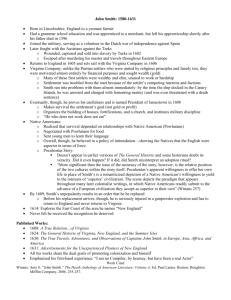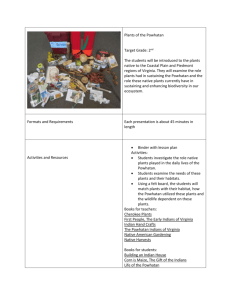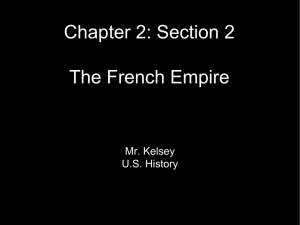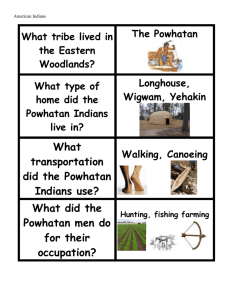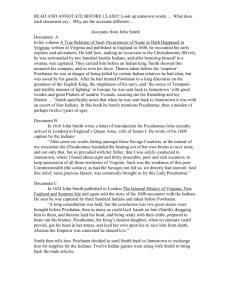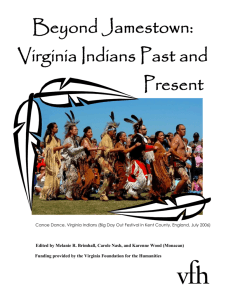Powhatan Identity in late 17th-Century Virginia
advertisement
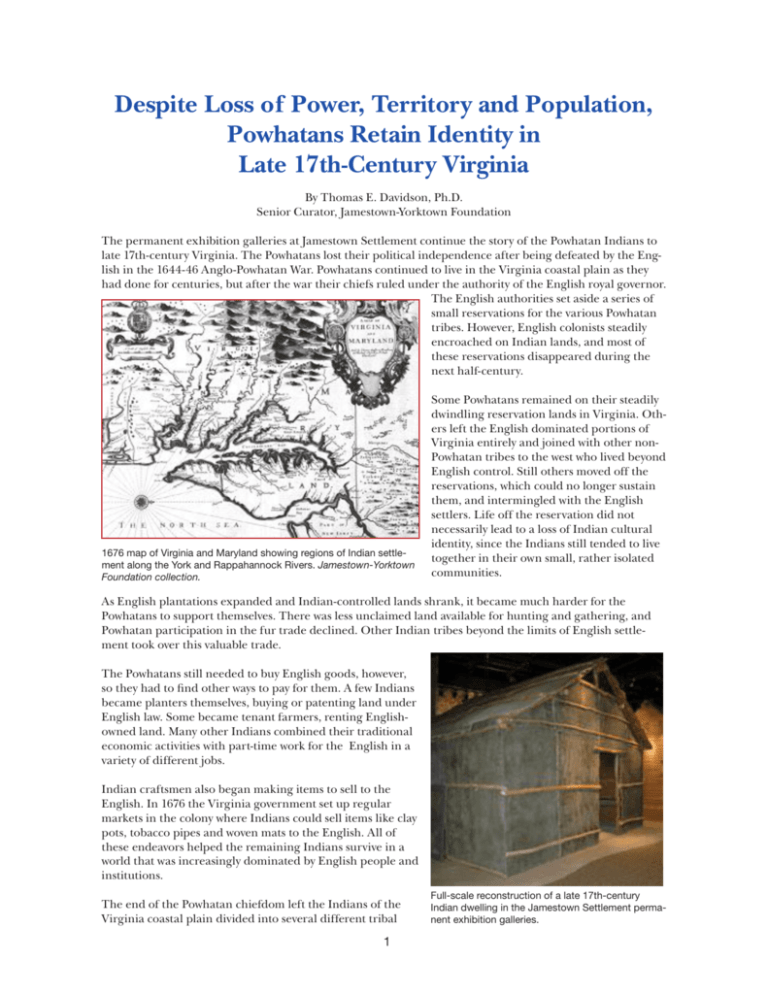
Despite Loss of Power, Territory and Population, Powhatans Retain Identity in Late 17th-Century Virginia By Thomas E. Davidson, Ph.D. Senior Curator, Jamestown-Yorktown Foundation The permanent exhibition galleries at Jamestown Settlement continue the story of the Powhatan Indians to late 17th-century Virginia. The Powhatans lost their political independence after being defeated by the English in the 1644-46 Anglo-Powhatan War. Powhatans continued to live in the Virginia coastal plain as they had done for centuries, but after the war their chiefs ruled under the authority of the English royal governor. The English authorities set aside a series of small reservations for the various Powhatan tribes. However, English colonists steadily encroached on Indian lands, and most of these reservations disappeared during the next half-century. 1676 map of Virginia and Maryland showing regions of Indian settlement along the York and Rappahannock Rivers. Jamestown-Yorktown Foundation collection. Some Powhatans remained on their steadily dwindling reservation lands in Virginia. Others left the English dominated portions of Virginia entirely and joined with other nonPowhatan tribes to the west who lived beyond English control. Still others moved off the reservations, which could no longer sustain them, and intermingled with the English settlers. Life off the reservation did not necessarily lead to a loss of Indian cultural identity, since the Indians still tended to live together in their own small, rather isolated communities. As English plantations expanded and Indian-controlled lands shrank, it became much harder for the Powhatans to support themselves. There was less unclaimed land available for hunting and gathering, and Powhatan participation in the fur trade declined. Other Indian tribes beyond the limits of English settlement took over this valuable trade. The Powhatans still needed to buy English goods, however, so they had to find other ways to pay for them. A few Indians became planters themselves, buying or patenting land under English law. Some became tenant farmers, renting Englishowned land. Many other Indians combined their traditional economic activities with part-time work for the English in a variety of different jobs. Indian craftsmen also began making items to sell to the English. In 1676 the Virginia government set up regular markets in the colony where Indians could sell items like clay pots, tobacco pipes and woven mats to the English. All of these endeavors helped the remaining Indians survive in a world that was increasingly dominated by English people and institutions. The end of the Powhatan chiefdom left the Indians of the Virginia coastal plain divided into several different tribal 1 Full-scale reconstruction of a late 17th-century Indian dwelling in the Jamestown Settlement permanent exhibition galleries. groups, each of whom had to find their own way of dealing with a rapidly changing world. Some of these groups broke apart into even smaller units, but others joined together, forming new tribal alliances to help maintain a way of life different from that of Virginia’s English majority. It is clear that most Powhatans preferred to keep their own customs and institutions, despite pressure from Virginia’s colonial government to adopt English ways. Some Powhatans, especially tribal leaders, learned to speak English in order to deal with governmental authorities, and by the end of the 17th century many younger Powhatans had begun to speak English as their first language. Even so, most Indians chose to live lives that were different from the lives of their English neighbors. Strong kinship networks helped tribal identities endure even when economic necessity led to the dispersal of tribal populations. Family became the chief mechanism for the survival of Powhatan culture, a tradition that endures in Virginia up to the present day. ©Jamestown-Yorktown Foundation P.O. Box 1607, Williamsburg, VA 23187 June 2014 www.historyisfun.org 2
